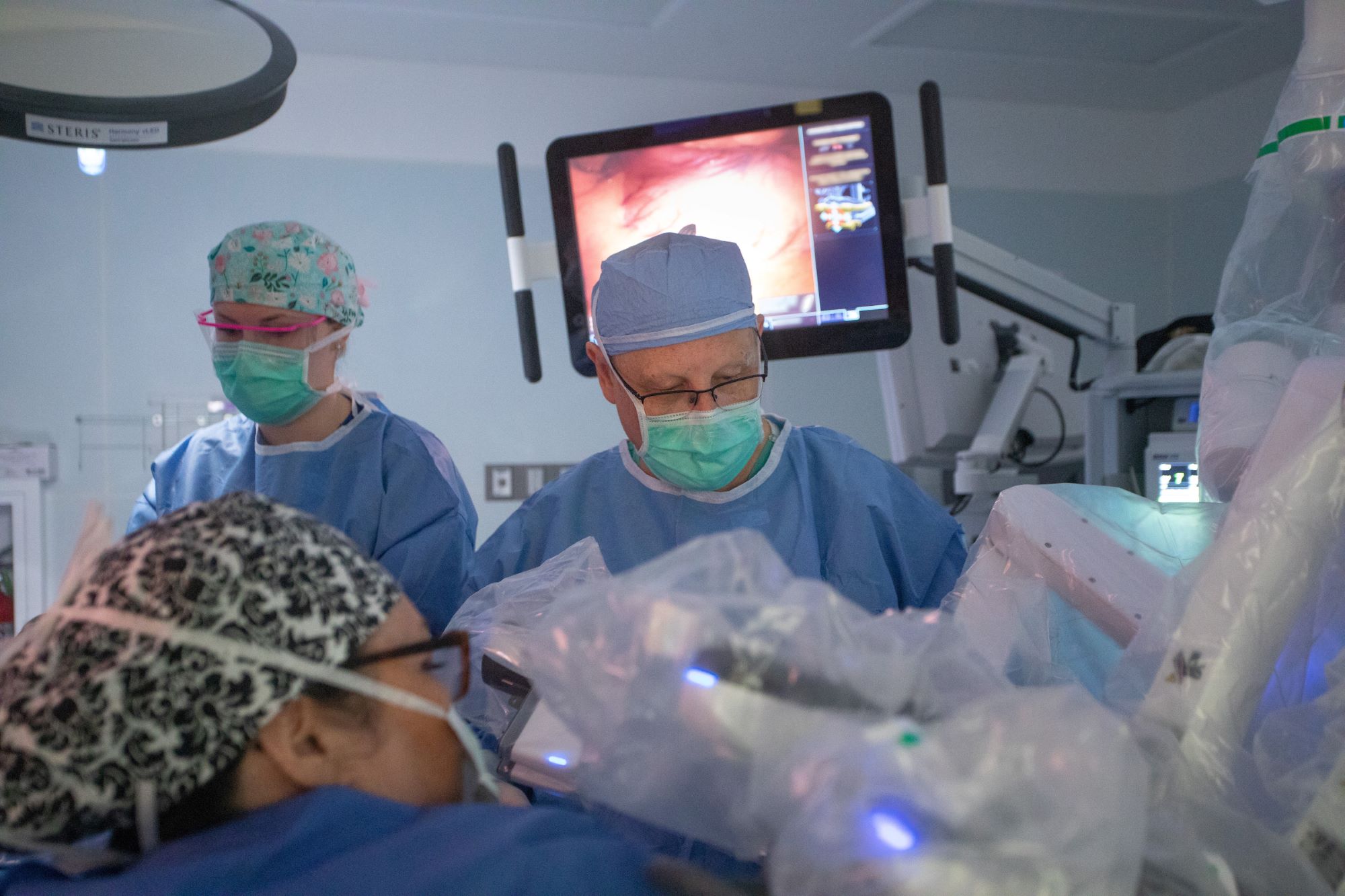USA Health expands capacity for robot-assisted surgery
MOBILE, Ala. – USA Health is expanding its capacity to provide innovative, minimally invasive surgery for patients with the addition of two new robotic surgical systems.
New da Vinci Xi surgical systems are being added at University Hospital and Children’s & Women’s Hospital, expanding USA Health’s growing robot-assisted surgery program from four robots to six. Often used in minimally invasive surgeries, the da Vinci Xi is designed to enhance surgical precision and enable smaller incisions, resulting in a quicker recovery for patients.
“USA Health continues to invest in advanced technology to ensure the community and our physicians have access to the highest level of care,” said Shannon Scaturro, MSHA, MSN, CRNA, FACHE, chief operating officer for USA Health and assistant vice president for medical affairs. “This additional investment in our robotic surgery program will allow greater access to this specialized technology and expand the opportunities for the next generation of physicians to receive advanced surgical training.”
The da Vinci Xi can be used across a wide spectrum of minimally invasive surgical procedures including general surgeries, and urologic, gynecologic and colorectal surgeries. With minimally invasive surgery, patients experience reduced trauma to the body, shorter hospital stays, reduced blood loss, less post-operative pain, less risk of infection and less scarring.
In the operating room, a surgeon controls the da Vinci system’s four tiny instruments from a console using magnified views of the surgery site. Robotic instruments move like a human hand but with greater precision and a greater range of motion.
William O. Richards, M.D., FACS, professor and chair of surgery at the Frederick P. Whiddon College of Medicine, said the da Vinci Xi allows surgeons to visualize the anatomy of a patient in highly magnified three-dimensional high-definition video images. Firefly florescence imaging provides real-time visualization and assessment of blood vessels, bile ducts and tissue perfusion.
“These advantages of robotic surgery have reduced the intra-operative perforation of the esophagus to zero, and it has reduced the hospital stay for a robotic Heller myotomy to one night versus the laparoscopic procedure, which had a perforation rate of 11.5% and a hospital stay of two days,” Richards said. A Heller myotomy is a surgical procedure that treats achalasia, a disorder of the esophagus that makes it hard to swallow and digest food.
Christopher Keel, D.O., FACS, chair of urology at the Whiddon College of Medicine, has used the existing da Vinci Xi and the da Vinci SP (single port) at University Hospital to perform urologic procedures including prostatectomy, bladder removal and many other reconstructive surgeries. He said the motto for the Department of Urology is, “If it can be done, it can be done robotically.”
“We’re doubling down on our commitment to providing the most advanced and leading-edge technology,” Keel said. “Adding new robots to the fleet allows us to expand our robotics program, especially as we recruit new surgeons who are familiar with the latest and greatest technology.”
USA Health gynecologic oncologist Nathaniel Jones, M.D., said the da Vinci Xi technology “empowers our surgeons with enhanced precision, control, and visualization, allowing for minimally invasive procedures that significantly reduce recovery time and improve outcomes for women of the Gulf Coast.”
Jones provides care for women with cancers of the reproductive system and performs surgery at Children’s & Women’s Hospital.
“This technology represents a new era and standard of care in gynecological surgery, bringing cutting-edge solutions to some of the most complex conditions in minimally invasive surgery,” he said.

Stay Connected
Fill out and submit the form below to get regular updates from Mobile Chamber delivered directly to your inbox.






